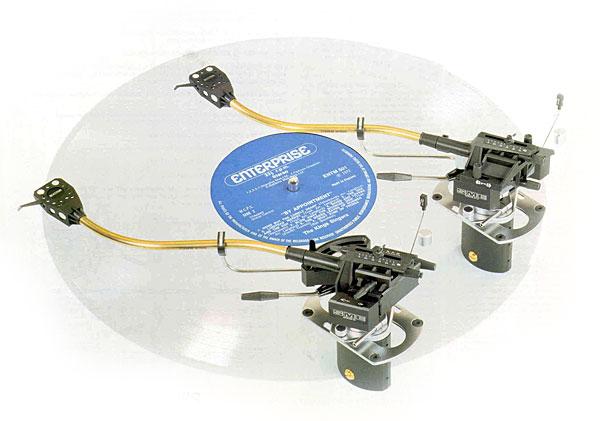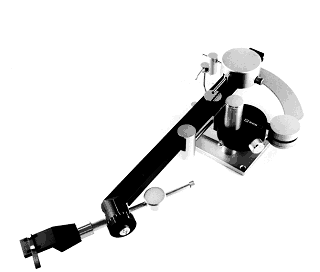The name SME precedes the brand. Everyone in the audiophile community knows it’s a terrific firm with a fantastic history. Any SME product is guaranteed to be of high quality, and it has never produced a dud. Is that the case? Some people don’t consider the Series III, which was introduced in 1978 and won a British Design Council Award, to be deserving of the name.
Even inside the corporation, folks I’ve spoken to privately admit that they don’t believe the Series III was the pinnacle of their achievements. This is evident in the fact that SME no longer supports the III; the business will not maintain or rebuild them, and few spare parts are available. In the grand scope of things, this isn’t so remarkable, but for a SME whose after-service is legendary, it’s perplexing. In other words, if there was ever an ugly duckling built in Steyning, it’s the Series III.
I’m not sure why it’s so unloved. Let’s take a step back and consider how people might respond if the Series III was released today. You’d be blown away by the build quality, albeit parts of the plastic superstructure surrounding the bearings might be a little flimsy. You’d think the titanium nitride arm tube’s polish was superb, and you’d applaud the firm for utilizing such a cutting-edge material — for stiffness and low bulk, of course. You enjoy the ‘carrying arm’ design because it allows you to effortlessly replace cartridges without jeopardizing structural integrity. You’d appreciate its adaptability, which includes the snappy gear-driven overhang adjustment.
You’ll appreciate the thought that went into the tonearm’s geometry. To prevent azimuth shift during vertical arm movement, its vertical bearing angle, for example, coincides with the headshell offset. To minimize overhang variation when playing warped records, the vertical bearing is positioned at the same height as the stylus. The laterally adjustable counterweight balances the stress on each vertical knife-edge bearing. From its silky Nylon knife-edge vertical bearings to its low mass, finely finished carbon fibre headshell, the result is an arm that feels great to use.
Can’t it be one of the aforementioned reasons? The Series III’s unpopularity is almost certainly due to the fact that it was developed for a very different set of user requirements than the ones we have now. The Series III came into a world of low mass moving magnet cartridges tracking at unfeasibly low weights, much like the Jaguar XJS V12 came out when petrol was a pound a gallon – and hence isn’t a practical idea these days. The Shure V15 mk4, which was designed to track at 1.25g with very high compliance in ‘ultra low mass’ tonearms, was one of the greatest cartridges of the day – at least according to popular knowledge. The SME III was ideal for such tasks, but when the world realized that higher mass moving coils from companies like Supex and Koetsu were truly superior, the Series III became a V12 Jaguar in the middle of an oil crisis. It might have been a lovely thing, but it was no longer a viable option.
This lovely low-mass tonearm may have helped Shure and Ortofon moving magnets ride record warps more smoothly, but it couldn’t get the most out of the new generation of super moving coils that appeared in the late 1970s and early 1980s. In fairness, the III was incredibly adaptable, and you could use its silicon damper on the Linn Asak, and mass load the headshell and counterweight to make it operate better with medium compliance cartridges, but it was never going to be a Zeta or even a Linn Ittok. Fundamentally, the SME III was created for a different environment, one that was concerned with a particular type of cartridge technology at the time.
It’s not as impressive acoustically as the IV and V that came after it, but if you keep it in its comfort zone, it’s better than the 3009S2 it sought (and failed) to replace. By today’s standards, it has a soft sound; it’s pleasingly smooth and pleasant, but the bass is hazy and the treble is diffuse. The midband isn’t as detailed or as perceptive as a middle-ranking Rega arm. As a result, you’re left with a sluggish but pleasing sound. Even if it sits on dynamics and blurs transients, it seems to move along beautifully in a rhythmic sense.
The SME Series III is a pleasant arm to listen to, much like an EL34-aspirated tube amp will produce a sweet, pleasant, and smooth sound. However, no matter how you look at it, it isn’t the pinnacle of vinyl performance. Most purchasers only want them to fit a SME-sized slot on an arm board, so costs are stuck between £150 and £250 these days. They’re a nice throwback to the 1970s, but don’t expect them to fill all of your future vinyl requirements!







